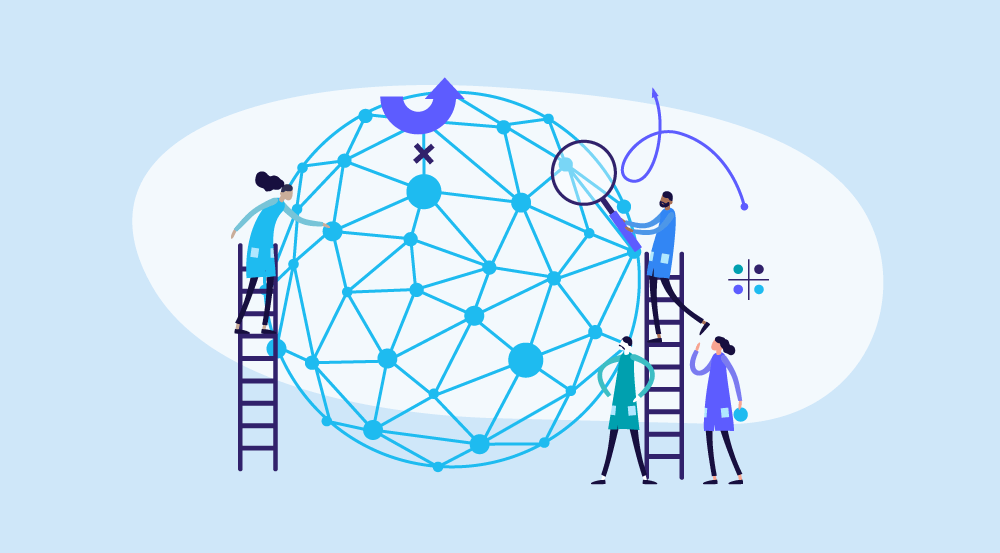Businesses prioritize leadership development to recruit and foster leaders.
According to a survey, 60% of HR executives plan to focus on cultivating leader and manager effectiveness in 2023.
They aim to develop specific leadership qualities like authenticity, empathy, and adaptiveness.
This represents a shift towards a new kind of leadership known as "human" leadership.
Moreover, the World Economic Forum predicts that leadership and social influence will be in high demand in the workplace until 2022.
This aligns with the growing trend of all workers becoming lifelong learners to bridge emerging skills gaps.
For professionals who aspire to advance their careers and assume leadership roles, having a leadership development plan is crucial.
The problem is the effective leadership development plan that would eventually pivot people within a thriving organization toward success.
A poorly developed leadership plan or poorly planned leadership development training will only work so much to garner substandard results.
This is where this post comes in.
We’ll take a quick look at the essentials of leadership development activities, and how to develop such plans to help your company with a robust & steady upward growth trajectory.
What Is Leadership Development From Corporates’ Perspective?
Wondering what is leadership development from a corporate perspective?
Leadership development activities from a corporate perspective refer to the systematic process of identifying and nurturing individuals within the organization who have the potential to become effective leaders.
It involves implementing programs and initiatives to enhance the leadership skills, competencies, and capabilities of employees, with the ultimate goal of building a strong leadership pipeline that can drive the company's success in the long term.
It is seen as a strategic investment in the organization's future.
It is not merely about filling immediate leadership positions but ensuring a steady supply of skilled and adaptable leaders who can guide the company through challenges and changes.
Here are some key aspects of leadership development training from a corporate's perspective:
Identifying High-Potential Individuals
Corporations proactively seek out employees who display exceptional qualities, potential, and commitment to the organization's values.
These individuals are often identified as high-potential employees (HiPos). Identifying HiPos is a critical first step in the leadership development plan.
Structured Development Programs
Corporates design and implement structured leadership development plans that provide participants with the necessary training, exposure, and experiences to grow as leaders.
These programs may include workshops, seminars, executive coaching, mentoring, job rotations, and special projects.
Focus on Core Leadership Competencies
Leadership development plans emphasize the development of core leadership competencies, such as communication, decision-making, strategic thinking, emotional intelligence, and change management.
These skills are essential for effective leadership in today's complex and dynamic business environment.
Succession Planning
Leadership development is closely linked to succession planning.
Corporates groom potential leaders to fill critical roles in the future, ensuring a smooth transition when current leaders retire, resign or move on to other positions.
Diversity and Inclusion
Effective leadership development emphasizes the importance of diversity and inclusion.
Corporations recognize the value of having leaders from diverse backgrounds, experiences, and perspectives to drive innovation and foster a more inclusive workplace culture.
Continuous Learning and Improvement
Leadership development is not a one-time event but an ongoing process.
Corporations encourage leaders to engage in continuous learning, participate in professional development opportunities, and stay updated with the latest industry trends and best practices.
Leadership Assessment and Feedback
Corporates often conduct leadership assessments and provide feedback to participants in development programs.
This helps individuals understand their strengths and areas for improvement, enabling them to focus on their personal and professional growth.
Alignment with Organizational Goals
Leadership development is aligned with the organization's overall strategic goals and values.
It ensures that future leaders are well-equipped to drive the company's mission and vision forward effectively.
Measuring the Impact
Corporates assess the effectiveness of leadership development programs through various metrics, such as employee engagement, retention rates, leadership performance, and organizational outcomes.
Now that you know what is leadership development, let’s have a look at its 12 crucial components.
12 Crucial Components of a Leadership Development Program
A well-designed leadership development plan at a company comprises several crucial components that are essential for nurturing and cultivating effective leaders.
These components work together to create a comprehensive and impactful leadership development experience. Here are some key components:
Leadership Competency Framework
A leadership development program should begin with a clear and well-defined leadership competency framework.
This framework outlines the specific skills, behaviors, and attributes that are expected of leaders within the organization.
It serves as the foundation for assessing, selecting, and developing leaders.
Identification of High-Potential Leaders
Identifying high-potential employees who have the potential to become future leaders is a critical step.
This process involves objective assessments, performance reviews, and input from managers and colleagues.
Identifying high-potential individuals ensures that the program targets the right participants.
Customized Development Plans
Individualized development plans are crafted for each participant based on their strengths, development areas, and career aspirations.
These plans outline the specific activities, training, and experiences that participants will undertake to enhance their leadership skills and competencies.
Leadership Training and Workshops
Leadership development programs typically include training sessions and workshops focused on various leadership topics.
These sessions may cover communication skills, emotional intelligence, decision-making, problem-solving, strategic thinking, and more.
The training should be interactive, engaging, and applicable to real-world leadership scenarios.
Coaching and Mentoring
In a Fortune 500 company, 77% of the participants reported that coaching had a substantial influence on at least one of nine business metrics.
Notably, the study found that overall productivity and employee satisfaction emerged as the most positively affected aspects.
One-on-one coaching and mentoring relationships with experienced leaders can provide invaluable guidance and support for participants.
Coaches and mentors offer personalized feedback, help participants navigate challenges, and assist in their professional growth.
Stretch Assignments and Job Rotations
Offering participants stretch assignments and job rotations provides them with opportunities to apply their learning in real work situations.
These experiences challenge participants to develop new skills, adapt to different roles, and gain exposure to various aspects of the business.
Cross-Functional Collaboration
Encouraging cross-functional collaboration allows leaders to work with colleagues from different departments or teams.
This fosters a broader understanding of the organization's operations and promotes a collaborative leadership approach.
Leadership Networking and Events
Facilitating leadership networking opportunities and events enables participants to connect with other leaders, both within the company and externally.
Networking helps build relationships, share insights, and gain perspectives from diverse sources.
Continuous Feedback and Evaluation
Organizations that embrace continuous performance feedback outperform their competitors at a notably higher rate, achieving a 24% advantage.
Continuous feedback and evaluation are integral to a successful leadership development program.
Regularly assessing participants' progress against their development plans helps track their growth and identify areas for improvement.
Integration with Succession Planning
The leadership development program should be closely integrated with the company's succession planning efforts.
Identifying potential successors for key leadership positions and aligning their development plans ensures a strong leadership pipeline.
Senior Leadership Support
Having active support and involvement from senior leadership is vital for the success of the program.
Senior leaders can act as role models, sponsors, and advocates for the program, emphasizing its importance to the organization's future.
Measurement of Program Impact
Measuring the program's impact on participants and the organization is crucial.
This involves tracking leadership development program outcomes, such as participants' career progression, leadership effectiveness, and the program's contribution to the company's overall success.
In conclusion, a well-rounded leadership development program incorporates these crucial components to create a structured and comprehensive learning experience for aspiring leaders.
By investing in leadership development, companies can build a strong leadership pipeline, foster a culture of continuous improvement, and drive long-term organizational success.
5 Steps To Creating an Effective Leadership Development Plan
Assessing Your Professional Position
To start mapping your leadership development, you need to understand yourself and your professional standing.
Take a look at your strengths, weaknesses, and tendencies in the workplace.
This will help you pinpoint areas for improvement and anticipate any hurdles you might face on your journey to becoming a better leader.
By identifying how your past experiences may or may not contribute to your future success, you become more aware of how your existing knowledge can either help or hinder your ability to lead others effectively.
It's all about raising your awareness of what you bring to the table as a leader.
Completing an assessment can be a great way to reflect on what motivates you and what limits you.
It gives you a more holistic view of your personal leadership style. And if you pair self-reflection with a 360-degree assessment, you can get feedback from your colleagues and peers.
This feedback provides valuable insight into how others perceive you and allows you to develop a stronger emotional intelligence.
So, take the time to assess where you are professionally. It will guide your leadership development and help you become an even better leader.
Setting Up Realistic & Achievable Goals
Setting goals is crucial in leadership development. It's like knowing where you're headed, otherwise, you'll never get there.
It may sound simple, but it's true. Experts suggest using the PACE model for goal setting.
PACE stands for Pick, Apprise, Collect, and Elicit. First, you need to pick a leadership goal that you want to achieve.
Then, you should inform those in your inner circle about your goal. Next, collect specific ideas on how to improve.
Lastly, seek feedback on your progress. PACE helps learners choose development goals and create a plan to achieve them.
When picking a goal, consider both the short and long term.
Don't lose sight of your long-term aspirations, but be mindful of taking small steps every day to avoid frustration.
It's important to have measurable milestones to track your progress along the way.
By setting attainable goals and regularly reviewing your progress, you can stay focused and motivated on your path to professional growth.
Adopting a Growth Mindset
When it comes to leadership development, it's important to have a mindset of continuous improvement.
Instead of focusing solely on formal programs, the most effective strategy involves creating a culture that values ongoing learning and growth.
This means empowering your employees to take the initiative and engage in self-directed learning, while also ensuring that their goals align with the needs of the company.
Fortunately, technology has made it easier than ever to facilitate self-directed learning.
With cloud-based apps like Microsoft Teams and SharePoint, knowledge sharing has become more accessible and convenient.
These platforms offer infinite possibilities for individuals to explore new paths of knowledge and expand their skills.
When implementing a leadership development strategy, it's crucial to view it as a marathon rather than a sprint.
This means understanding that true development and growth take time and cannot be achieved overnight.
It requires a long-term commitment to continuous learning and improvement, both on an individual and organizational level.
By adopting a mindset of continuous development and providing employees with the tools and resources they need to engage in self-directed learning, you can create a culture that promotes leadership growth and ultimately contributes to the success of your company.
So, embrace the marathon approach and prioritize ongoing learning as an integral part of your leadership development strategy.
Delivering Training and Tech
Leadership training is essential for organizations to thrive. However, traditional leadership development programs may not be suitable for leaner companies.
This is because smaller businesses cannot afford to have their managers away from the office for extended periods of time.
They need a more practical approach to leadership training.
- On-the-job Training for Managers
One solution is to offer on-the-job training for managers. This allows them to continue working while developing their leadership skills.
They can learn from experienced leaders within the company and receive guidance and feedback in real time.
This approach provides a more hands-on and personalized learning experience.
- Online Leadership Courses
Another option is to provide online leadership courses.
This allows managers to access training materials and modules at their convenience.
They can learn at their own pace and fit the training into their busy schedules.
Online courses also offer the opportunity for collaboration and discussion with other participants, enhancing the learning experience.
It is important to tailor the leadership training to the specific needs and challenges of the organization.
This can be done through customized workshops and individual coaching sessions.
By addressing specific issues and providing practical tools and strategies, managers can immediately apply what they learn to their day-to-day work.
In conclusion, effective leadership development is crucial for all organizations.
However, it is important to adapt the training approach to the unique constraints and requirements of leaner companies.
By offering on-the-job training, online courses, and customized workshops, organizations can deliver the necessary leadership training in a practical and efficient way.
Honing Soft Skills
Did you know that the significance of soft skills accounts for 85% of an individual's career success?
- Your network is important.
- Connect with peers to grow and learn from each other. In the Leadership Principles course, learners practice giving feedback and evaluate their effectiveness.
- Interacting with others helps make theoretical ideas practical.
- Be a good protégé and leader by engaging with others and understanding how your capabilities affect them.
- It's an ongoing process of learning and improvement.
- So, make sure your leadership development includes interaction with fellow learners and those who benefit or suffer from your leadership.
- This interaction is crucial for the practical application of knowledge. Don't be afraid to reach out and build relationships.
- Connecting with like-minded individuals can provide valuable opportunities to apply what you've learned and receive feedback on your progress.
- Networking is a powerful tool in your arsenal as a leader, so make it a priority to nurture and expand your professional network.
Oreed: Empowering Workforce Advancement
If you are seeking a comprehensive education intelligence platform to upskill your employees or implement knowledge management, look no further than Oreed.
Enhance Employee Awareness
Oreed provides a holistic view of your workforce, empowering you to make informed decisions that benefit both your employees and your company.
Tailored Training and Courses
In addition to enhancing awareness, Oreed enables the development of customized training and courses tailored to your employees' specific needs.
Measure Impact and Effectiveness
Oreed's strength lies in its robust analytics and reporting capabilities.
Measure the impact and effectiveness of your training initiatives, gain valuable insights into employee progress, and continuously improve your programs.
Achieve Unprecedented Levels of Success
We not only promises improvement but delivers unparalleled success. Experience a remarkable 10x increase in customer revenue and engagement.
Boost employee productivity, enhance organizational efficiency, and maximize your return on investment (ROI) with Oreed.
Aligned with Vision 2030's Human Capital Development: Oreed's Role
In alignment with Vision 2030's vision for human capital development, continuous learning, reskilling, and upskilling in Saudi Arabia's workforce are crucial.
Oreed's comprehensive education intelligence platform perfectly aligns with the objectives of the Human Capability Development Program.
By leveraging Oreed's platform, Saudi Arabia can effectively upskill its employees and implement knowledge management initiatives.
Our platform offers personalized learning pathways, innovative content delivery, and advanced analytics to optimize the learning experience and track progress.
Integrating Oreed's platform into the program empowers Saudi Arabia to successfully develop citizens' capabilities, enhance knowledge dissemination, and enable its workforce to compete globally.
So what are you waiting for? Book a demo with Oreed today and find out more about our features.
Promote lifelong learning through Oreed by experiencing the most powerful all-in-one training and development intelligent platform that streamlines all your organization's learning, training, and development activities in one place.





